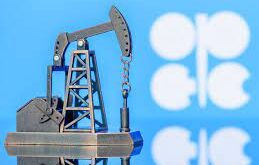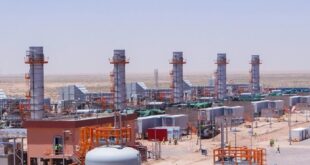OPEC production cuts. Venezuela’s output declines. inventory draws. speculative buying. and demand growth are all underpinning global oil markets at the moment. The weakening dollar is another factor that has contributed to oil’s increase to the $70 per barrel level. Oil prices and the dollar are typically inversely correlated. When the U.S. dollar weakens against other major currencies. the price of oil generally rises since more dollars are required to buy the same quantity as before. The reverse happens when the dollar strengthens.
The weakening dollar is another factor that has contributed to oil’s increase to the $70 per barrel level.
In the past year. the U.S. dollar has fallen by 12 percent versus a basket of currencies and oil has risen by more than 20 percent.
The weaker dollar has large implications for oil-exporting countries. particularly those in OPEC. as it cuts their purchasing power. The cartel’s members will earn less money than expected due to the dollar’s declining value. If the dollar continues to drop. producers will likely consider this factor in determining its output strategy and possibly seek higher prices. OPEC—along with its non-OPEC allies such as Russia—is nervous that oil prices in the $60-$70 range will stimulate a wave of non-OPEC supply. such as shale. But they may become more comfortable with $70 oil. or even higher. to offset their lost purchasing power. If OPEC sees that oil prices are actually falling in real terms. it would limit incentive to stop cutting production. Igor Sechin. the head of Russian oil producer Rosneft. deflected the blame of higher oil price to the dollar: “I think that the effect of the dollar’s devaluation is stronger than the OPEC deal.“
The cartel’s members will earn less money than expected due to the dollar’s declining value.
This is not the first time oil producers have grumbled about the lower dollar. In 2007. OPEC officials pointed at the U.S. dollar as a main factor behind higher oil prices. OPEC’s president at the time. Mohamed Bin Dhaen al Hamli. said producers were “concerned about the continuing weakness of the US dollar“ because “this is having a significant effect on the purchasing power of oil producing countries.“ At that time. oil prices were trending higher—ultimately reaching $147 in 2008—and the dollar was in the midst of two-and-a-half year. 22 percent decline. One economist estimated that for every 10 percent drop in the dollar versus other currencies. the purchasing power of OPEC countries in the Middle East falls by 5 percent.
The weaker dollar boosts U.S. exports. supporting shale producers.
The weaker dollar. meanwhile. boosts U.S. exports. supporting shale producers. The obvious benefit of the dollar’s decline is that it makes American products cheaper abroad. The U.S. has exported more than one million barrels per day (Mbd) of crude. with volumes reaching 1.7 Mbd in October. Higher exports stem in large part from an open arbitrage because of the wide WTI-Brent differential. but the dollar’s decline is also a factor.
While the dollar’s fall has supported oil prices. the greenback’s rise could easily precipitate a downward correction in the oil markets. Non-commercial net length in futures and options for both WTI and Brent has recently reached record levels. prompting worries of a selloff. Shifts in supply-demand fundamentals or an increase in the dollar’s value would force investors to liquidate.
 Iran Energy News Oil, Gas, Petrochemical and Energy Field Specialized Channel
Iran Energy News Oil, Gas, Petrochemical and Energy Field Specialized Channel




